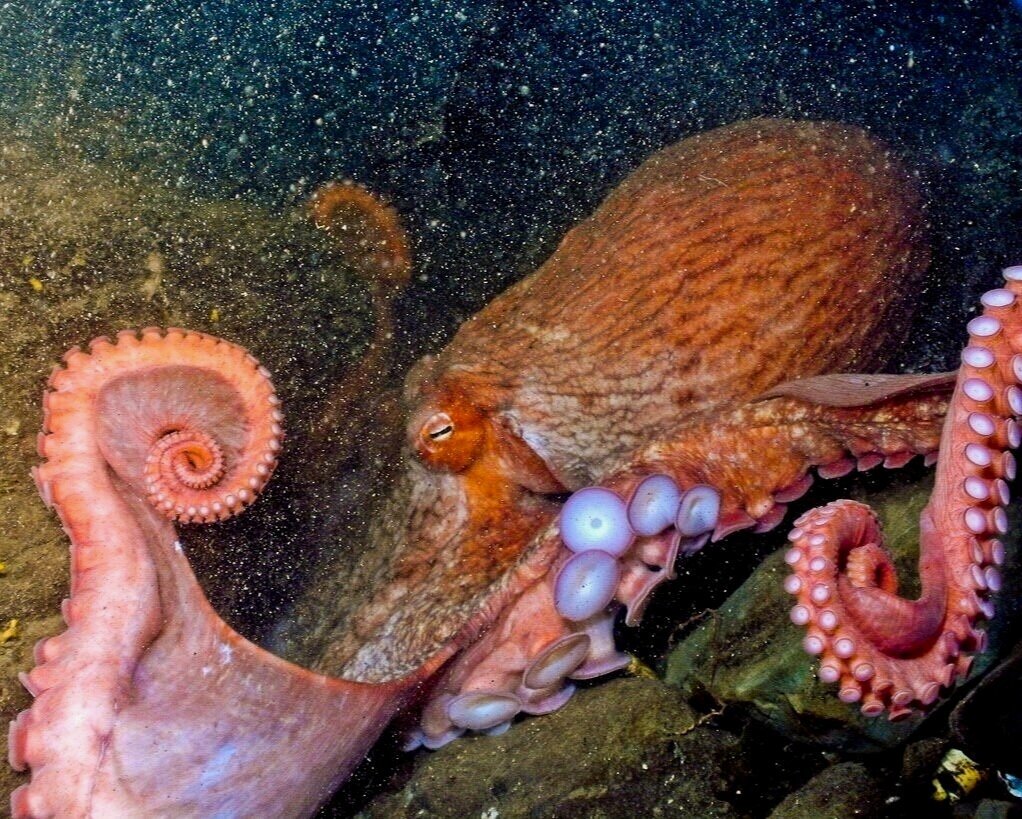Giant Pacific Octopus Facts
Photo by Jacqueline Winter. Banner photo by Bruce Kerwin.
The giant Pacific octopus (Enteroctopus dofleini) is the largest octopus species in the world and can be found right here in the Salish Sea. It prefers shallow and nearshore marine environments, seeking out covered, secluded dens to hide from predators beneath the protection of rocky structures. The giant Pacific octopus inhabits the entire Pacific Rim from the western coastline of North America all the way to Korea. It has a longer lifespan than most other octopods, living between 3 to 5 years.
DID YOU KNOW?
Most giant Pacific octopuses weigh less than 70 pounds and can stretch 15 feet in length. The largest confirmed giant Pacific octopus found weighed 437 pounds (198.2 kilograms).
At the end of her life, the female octopus will lay between 120,000 and 400,000 eggs and stop eating for around 6 months until the eggs have hatched. When the larvae hatch, they are just the size of a grain of rice. From the thousands of eggs, only 1 to 2 will survive to become mature octopuses.
This species is considered the most intelligent invertebrate with a complex, lobed, and folded brain.
While octopods typically exhibit shy behavior towards humans, there have been multiple diver attacks recorded. Diver attacks usually occur when the octopus is aggravated or provoked by humans, whether by accident or when trying to capture footage. Divers should use caution around the giant Pacific octopus because of its ability to inject venom into a bite through its saliva.
The octopus will typically stalk and trap its prey, but wait to eat until it returns to its den, leaving bones and shell remnants at the entrance. The giant Pacific octopus can catch multiple prey items at once, holding onto each one using the suction discs on their tentacles.
The giant Pacific octopus feeds on prey that live near the bottom of the ocean. It hunts a wide variety of crustaceans and mollusks such as clams, mussels, crabs, and fish.
Photo by Peggy Coburn.



